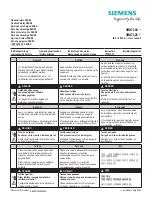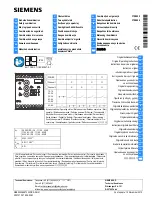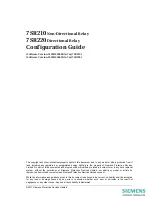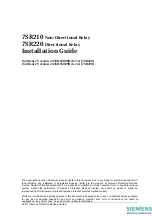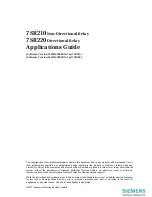
K8AK-TH
9
1.
Do not use or store the product in the following locations.
•
Locations subject to water or oil
•
Locations subject to direct radiant heat from heating equipment
•
Outdoor locations or under direct sunlight
•
Locations subject to dust or corrosive gases (particularly
sulfurizing gases, ammonia, etc.)
•
Locations subject to rapid temperature changes
•
Locations prone to icing and dew condensation
•
Locations subject to excessive vibration or shock
2.
Use and store the product in a location where the ambient
temperature and humidity are within the specified ranges. If
applicable, provide forced cooling.
3.
Mount the product in the correct direction.
4.
Check terminal polarity when wiring and wire all connections
correctly. The power supply terminals do not have polarity.
5.
Do not wire the input and output terminals incorrectly.
6.
Make sure the power supply voltage and loads are within the
specifications and ratings for the product.
7.
Make sure the type of the thermocouple matches the input type
that the Temperature Monitoring Relay is designed for.
8.
If you need to extend the length of the lead wires on the
thermocouple, make sure to match the type of thermocouple and
always use compensating conductors.
9.
To extend the lead wires on the platinum resistance thermometer,
use lead wires with a low resistance (5
Ω
or less per wire), and
make the resistance equal on all three lead wires.
10.
Make sure the crimp terminals for wiring are of the specified size.
11.
Do not connect anything to terminals that are not being used.
12.
Use a power supply that will reach the rated voltage within 1
second after the power is turned ON.
13.
After you turn ON the power, it takes 2 seconds for the outputs of
the Temperature Monitoring Relay to stabilize. Take this time into
account when you design the control panel.
14.
Allow at least 30 minutes for the product to warm up. During this
time, the temperature measurements will be incorrect.
15.
Keep wiring separate from high voltages and power lines that
draw large currents.
Do not place product wiring in parallel with or in the same path as
high-voltage or high-current lines.
16.
Do not install the product near equipment that generates high
frequencies or surges.
17.
The product may cause incoming radio wave interference. Do not
use the product near radio wave receivers.
18.
Install an external switch or circuit breaker and label it clearly so
that the operator can quickly turn OFF the power supply.
19.
When cleaning the product, do not use thinners or solvents. Use
commercial alcohol.
20.
When discarding the product, properly dispose of it as industrial
waste.
21.
Make sure the power and output indicators operate correctly.
Depending on the application environment, the indicators and
other plastic parts may wear prematurely and become difficult to
see. Check and replace these parts regularly.
22.
The terminal blocks may heat up to 65
°
C. Use care when
handling them.
Observe the following operating
methods to prevent failure and
malfunction.
1.
Use the power supply voltage, input power, and other power
supplies and converters with suitable capacities and rated
outputs.
2.
Use a precision screwdriver or similar tool to adjust the rotary
switches.
Mounting and Removing
•
Mounting to DIN Track
1. Catch the upper hook on the DIN Track.
2. Push the product onto the Track until the hooks lock into place.
•
Removing from the DIN Track
Pull down on the bottom hook with a flat-blade screwdriver and lift
up on the product.
Precautions for Safe Use
Precautions for Correct Use
A
B
PFP-100N (100 cm)
PFP-50N (50 cm)
Applicable DIN Tracks:
Buy: www.ValinOnline.com | Phone 844-385-3099 | Email: [email protected]












